From the moment I saw my older brother playing Resident Evil on the PlayStation, I have been enthralled with Zombies. Admittedly, the first exposure did cause terrible nightmares for a considerable amount of years. It wasn’t helped when I found out that I shared my name with the protagonist of Resident Evil 2. But after years of therapy, I found myself with a curiosity that couldn’t be satiated by watching someone else play. Instead, I faced my fears and tackled the games head-on. I watched zombie movies and TV shows and read zombie literature until I became an entirely desensitized zombie nerd!
So, I have compiled my top 10 zombie games of all time. This list is based on my experiences with the games and not on other reviews. Also, if you don’t want any storyline spoilers, do not read past the title. You can also check it out above in the form of a video if you don’t feel like reading!
10. Stubbs the Zombie in Rebel Without a Pulse (2005)
A third-person game where your task is converting humans into members of your zombie army or outright killing them. You’re armed with some necrotically themed special weapons, such as organ grenades. You also have the ability to possess them with your dismembered hand, which attaches to their heads.
You play as a former door-to-door salesman (turned undead abomination) called Stubbs and progress through increasingly difficult levels. Stubbs rises from the dead (due to experimental fertilizer) in 1959, right in the futuristic city of Punchbowl. He sets out on a “tour” of the city, eating his way through the living.
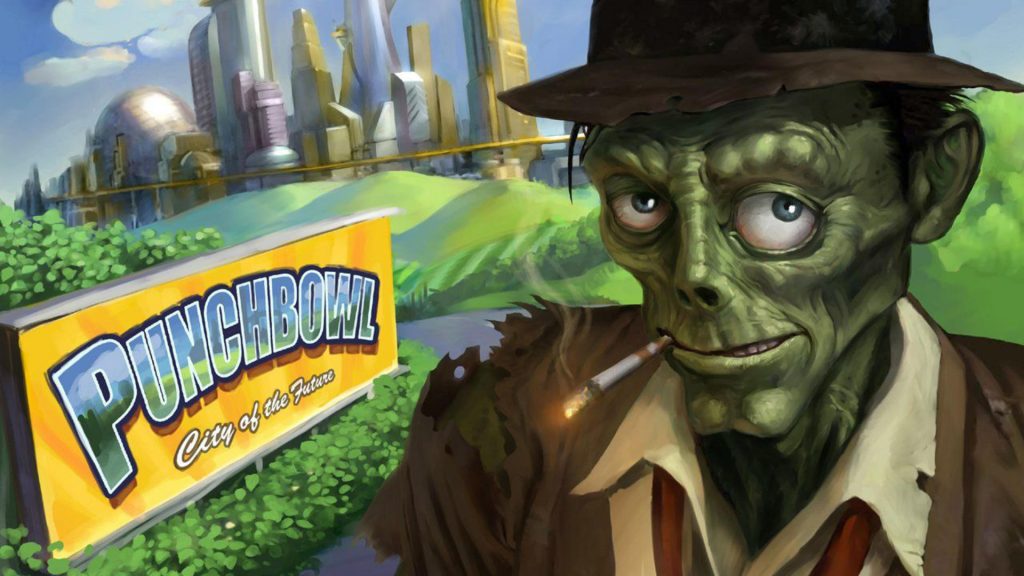
The controls aren’t the most intuitive, and replay value is lacking, but the campy, comedic tone keeps it enjoyable. It enjoys a unique place on this list because you are the zombie throughout, not as a game mode. This game turned the genre on its head because the object isn’t to survive the zombies but to make them.
9. Plants vs Zombies: Garden Warfare 2 (2016)
This franchise initially started as a parody mobile game before becoming popular enough to spawn big-budget parody sequels!
Plants vs Zombies: Garden Warfare is a fun, fast-paced game that sees Plants attempting to save the human race from the Zombie menace. Evolving from its “Tower Defence” roots, it is now a 3rd person shooter with different classes like “Team Fortress 2”. It is somehow whackier, though, if that’s at all possible.
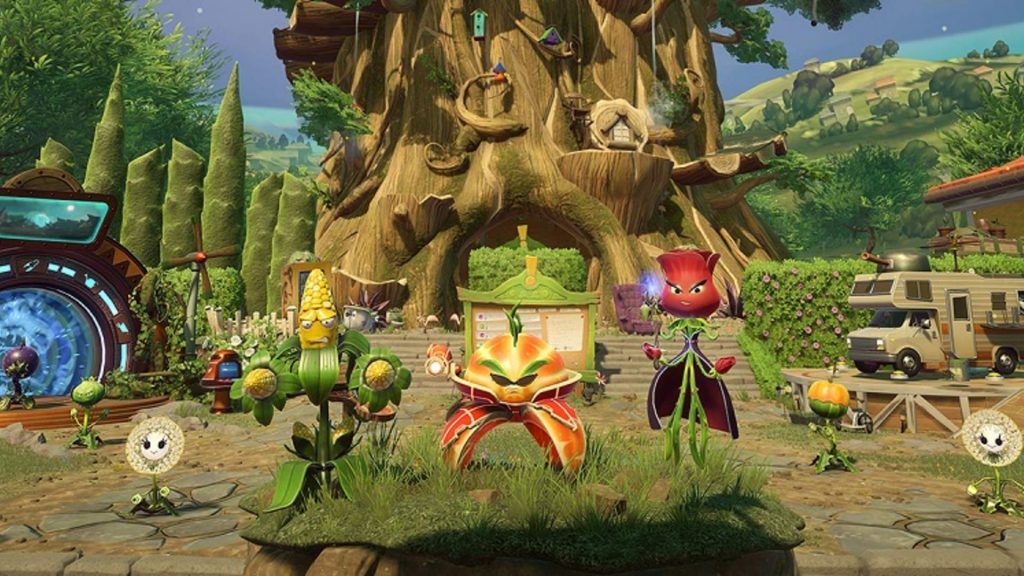
Garden Warfare 2 is the apex of the concept as it kept the game out of the microtransaction model. This made everything unlockable in-game, and it kept the fun and light-hearted tone that the franchise was known for. All the while having some incredibly detailed environments if you care to look at it.
It is, however, a fairly short game and wrings enough out of the core gameplay to engage for its playtime. After that, it offers replayability in the form of an online multiplayer game.
8. House of the Dead: Overkill (2009)
House of the Dead began as the answer to “Resident Evil” in arcades. But Overkill managed to bring all of the good things about its arcade predecessors to a home console. Nobody expected a gory, profanity-ridden rail shooter to be on the Wii because of its reputation as a family console. But it definitely felt at home with the motion controls fitting naturally with the gameplay.
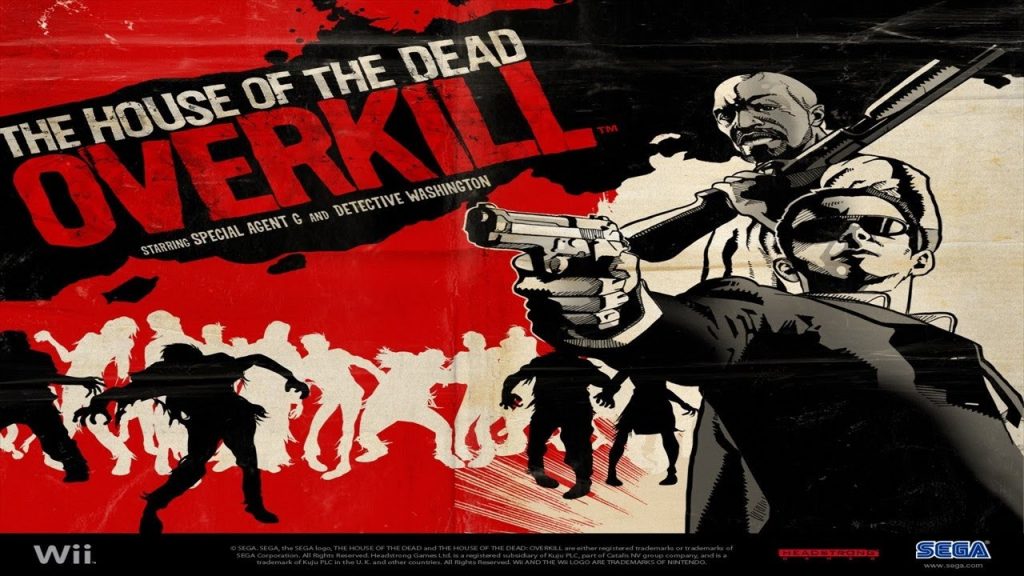
This game was great for an evening of mindless fun with friends and doesn’t climb much further than that. But to be honest, it didn’t need to. The best bit was getting the arcade gameplay without having to pump more money every time you die. This made the game infinitely more fun than any of the other entries in the franchise.
7. Dying Light (2015)
Dying Light is a spiritual sequel to Dead Island since Techland had Dead Island 2 taken away from them. This is a shame because nothing has done anything with it since the original cinematic trailer. As a game, it took cues from Dead Island and thus is a First-Person affair. Dying Light features both melee and firearms but with a unique gameplay aspect: Parkour. It took a bold step by having the main character infected from the moment the story starts, which was great. However, it’s not long before he’s cured, and it goes back to being any old FPS with zombies in it. The story was fairly predictable, with an antagonist who seemed to be evil for the sake of it. Maybe he was bored or something?
Dying Light also never made it clear if the place you’re in is the only infected place on earth. So, I was never sure of what the stakes were in failing to claim the cure from this random scientist. Basically, you seem to have been sent on a fetch quest by a bunch of jerks in an area where almost everyone is a jerk, and in the end, you can also become a jerk.
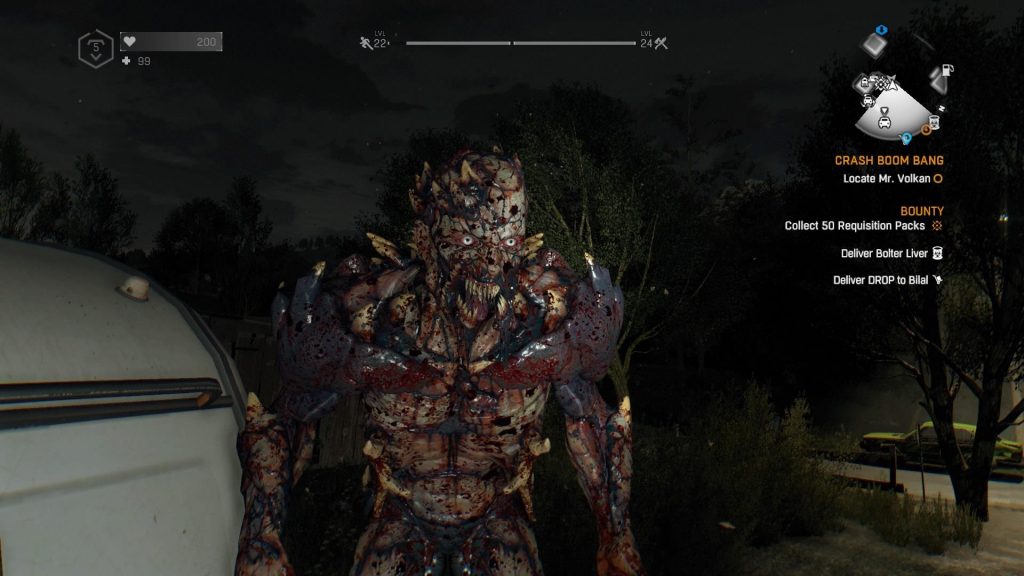
The upside is that the gameplay is fast-paced and cathartic because of the parkour. For example, you can dropkick a zombie off a roof, backflip off, and watch as whoever is chasing you falls off with a splat. It also has the unique selling point of the zombies becoming more vicious after dark. It takes Dying Light from being easy and unchallenging and transforms it into something absolutely terrifying.
The gameplay elevates it above other zombie games, even if the story and characters let it down. Like when the villain shouts out your name like William Shatner from Star Trek: The Wrath of Khan.
6. Dead Rising 2 (2010)
Dead Rising 2 managed to take what the first one set out and added a meaningful layer to it. It also upped the stakes of the timed gameplay. In the original, you could wait in a cupboard for the timers to run out and head for extraction. Granted, if you did that, it was a terrible ending, but the option was there. Now you are forced to go out into the surrounding area in a non-finger-wagging but definitely motivating way.
The addition of Chuck’s infected daughter added some real urgency to the game and gave Chuck a compelling motivation. His daughter needs regular doses of “Zombrex” to survive. This, to me, is better than wanting to break a story in the national news. The outbreak has spread across the US, meaning that what happened in the first game wasn’t enough to contain it. But it’s the way that the human race reacts to the undead that is interesting.
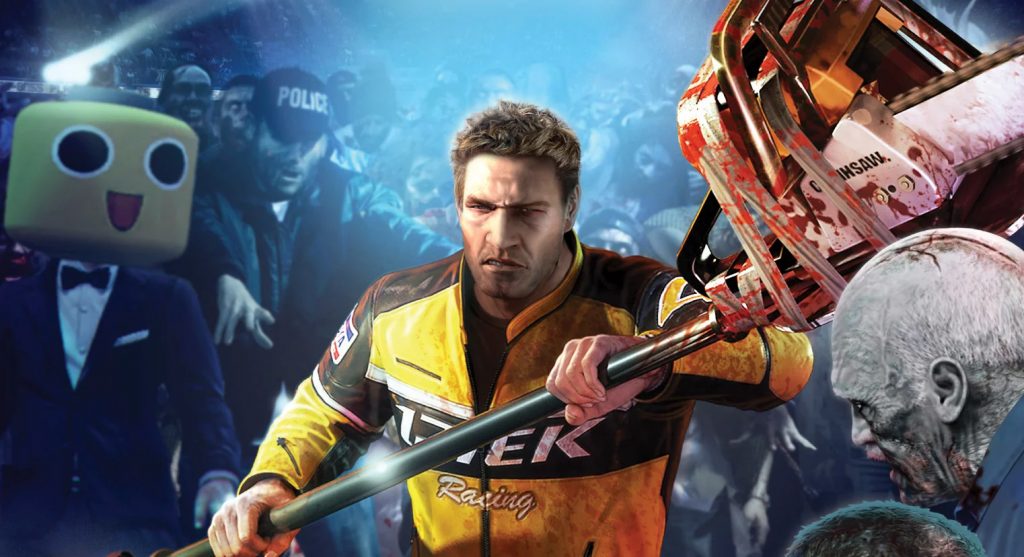
They used them for sport and entertainment in bizarre TV shows, and zombie rights activists exist, too. They ignore the fact that the undead are brainless, flesh-eating monsters and instead campaign for their protection. This, I thought, was hilarious and completely implausible…until this year. After living through Covid19 in the UK I’m starting to think that maybe that’s not so outlandish after all.
Dead Rising 2 has tightened controls and a bigger map. They also introduced combo weapons that made cutting through the undead a lot of fun. You know, in a gory and visceral sort of way (don’t judge me). The “Psychopaths” were also a huge highlight. They managed to keep things comedically creepy and show how quickly people go nuts in this environment. Also, some of them were probably waiting for the opportunity to be a murderous douchebag. Like the mailman, Carl Schliff, who never wanted to fail at his job. Carl, however, didn’t see that one of his packages was just full of explosives.
5. Left 4 Dead 2 (2009)
Left 4 Dead 2 offers hours of entertainment and replayability due to the AI Director. They introduced 3 new special infected (The Jockey, The Spitter, and The Charger) and melee weapons. This takes an otherwise bog-standard concept and turns it into a fun, fast-paced frenzy of panic and carnage.
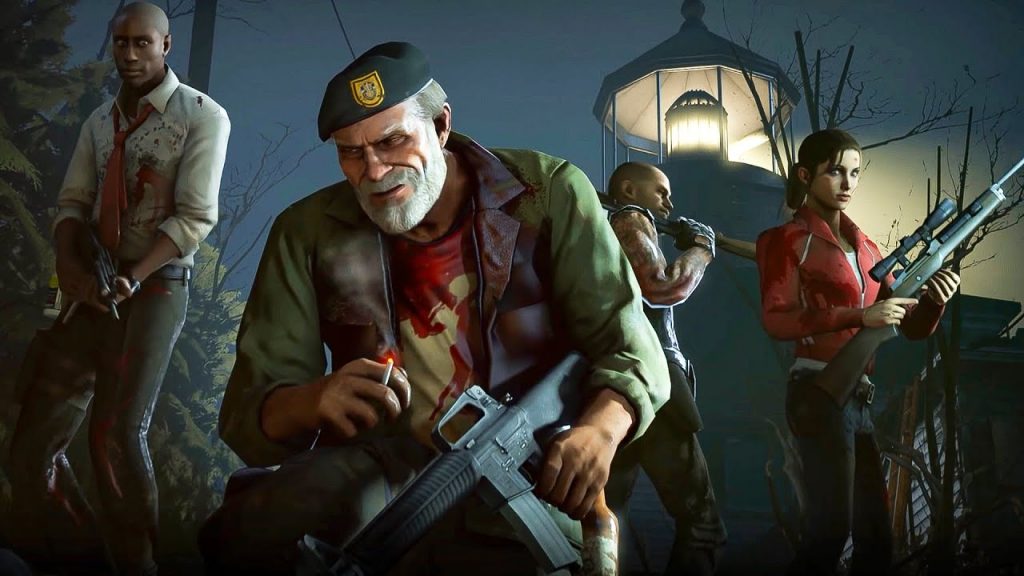
The story is a simple one. Four survivors attempt to make it to a safe zone by running through different campaigns and blasting through hordes of the undead to do it. There are no cutscenes in the game, so character development and story continuation happen within conversations between the characters at certain points in the level.
Using linear maps with randomly generated assortments of enemies and weapon pickups because of the AI Director, Left 4 Dead 2 manages to take a core concept of “Run & Gun” and stretch it across 5 campaigns while collecting a loyal fanbase that still thrives to this day. They’ve ported the campaigns from the first game into the sequel, kept the servers maintained, and let fans create non-canon campaigns and “what if” scenarios. Normally, a game without depth doesn’t appeal to me, but this game isn’t merely simple. The simplicity is executed perfectly and creates a game that you can keep coming back to time and again. I’m still hoping that Valve learns to count to 3.
4. State of Decay 2 (2018)
I’m still getting a lot of mileage from State of Decay 2 and have the maximum number of communities (save files) I can play with because the core gameplay is that of survival. You start each new game with a trio of survivors and tasked with setting up a base, growing your community, and clearing the map of threats. State of Decay 2 kept what was right in the first game, and built it up.
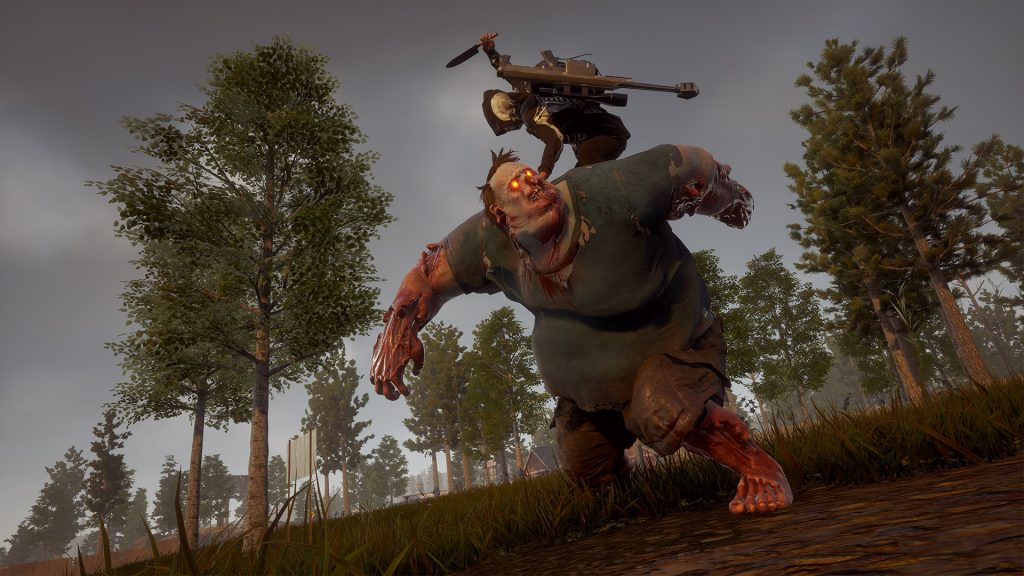
The map contains “plague hearts,” which create the plague zombies who transmit the blood plague. If you don’t treat them or cure them in time, they will turn into plague zombies and attack the rest of your settlement. There is no real story beyond that and everything else that happens in the game is through random encounters with other survivors on the map. Some of them are hostile and will attack you on sight, whereas others are friendly and offer items to trade or companionship. If your reputation with one of the other survivors within a settlement rises enough, you can also get the option to recruit one or more of the members into your group.
State of Decay 2 is the apex of survival-based building games. It is intuitive, challenging, and replayable. Once you’ve cleared one map, you can take up one of your groups that has achieved legacy status, create a new group on a new map, and start over. They’ve also added a story-based free DLC set in the map of the first game, but with the blood plague having spread so much that every zombie is a plague zombie, dramatically making the game more challenging. With State of Decay 3 coming to Xbox Series X, we expected them to wind down support for this game; however, with updates aplenty, State of Decay 2 is far from reaching its shelf life.
3. The Last of Us (2013)
The Last of Us is as close to “Oscar bait” as games can get. It has an emotionally charged story, action set pieces out of the arse, and relatable characters that are easy to engage with.
A fungus has taken over the world by spreading itself far and wide, infecting humans and turning them into terrifying murderous flesh-eaters that are intent on transmitting the spores into new hosts and adding to the hordes of shambling undead. Basing the infection on a real-life fungus is a different idea of the undead. But when it boils down to it, they are just undead in a stealth action setting. However, there are also living enemies, and when they turn up it can descend into nothing more than cover-based shooting, which was the prevalent core gameplay style of the time.
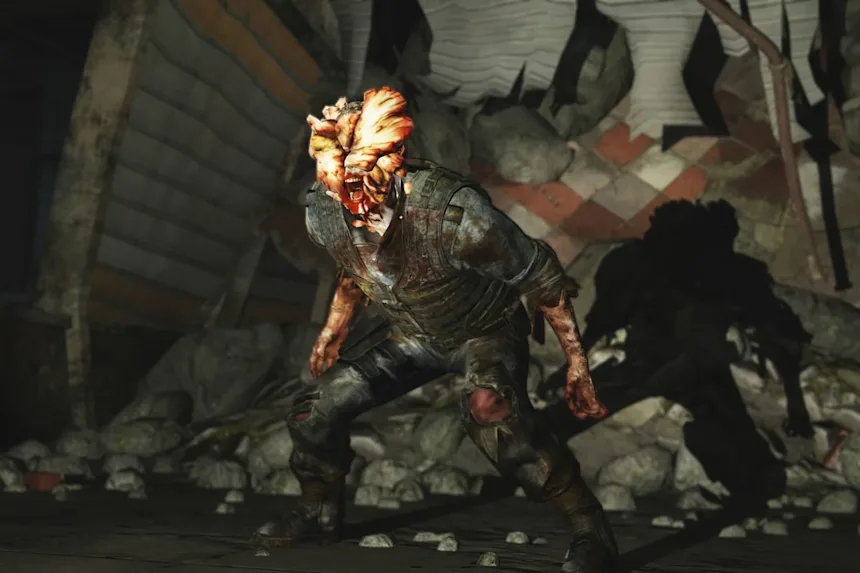
It has a dark and depressing color palette to go along with its dark and depressing atmosphere, but the game itself is surprisingly all about hope. Although, it certainly doesn’t seem hopeful when your daughter (the playable character up to that point) gets shot by a twitchy soldier.
You jump years into the future after this and start playing as the father (Joel), setting off on a mission to escort a young girl (Ellie) to a group who are working on a cure to the fungal virus. They believe she is the key to a vaccine because she has been bitten but not turned. Along the way, Joel and Ellie bond and learn about each other and fight against the living and the dead in an attempt to get to the salvation that the world needs.
The story is what carries The Last of Us. The character interaction draws you into the world, and the cover-based shooting and survival horror elements are well executed. The token crafting elements keep you on your toes because not having a shiv can be the difference between life and death in certain situations. The game is beautiful in the cutscenes, and “The Clickers” creep me out. I definitely went through multiple sets of underwear during my playthrough of this game.
2. Resident Evil 2 Remake (2019)
Resident Evil 2 Remake is the game that we were all hoping it would be. It took the original story, characters, and setting and spiced it up. It was simultaneously familiar and surprising in equal measure. The Remake took cues from its predecessors without sticking with the bad habits of becoming too action-oriented.
If you have played the original game then it hits all of the narrative beats and revelations that keep the game recognizable but with some slight twists and changes, making the old characters more compelling than before. For example, Marvin is a character we know is going to die from the moment you meet him, yet through good writing and how pivotal he is to your survival, you still feel it when he does finally turn.
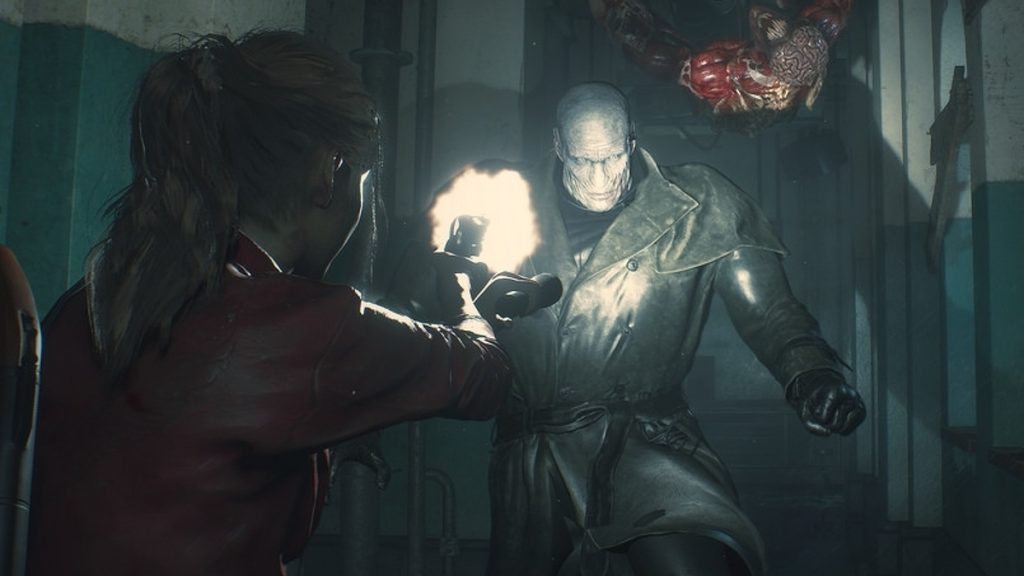
The different campaigns from Leon and Claire’s perspectives play the same but have unique playable moments as Ada Wong (Leon’s campaign) and Sherry Birkin (Claire’s campaign) make for some different gameplay than when you are one of the main characters of the story. As Ada, you have the ability to hack things, which opens barriers for Leon later. Playing as Sherry, there is a whole side mission that didn’t exist in the original game.
The revamped zombies and “Lickers” are tougher to kill than before. Zombies don’t stay down unless you destroy their heads entirely, and you have to barricade the windows of the RPD building strategically to prevent more from getting in. You can’t barricade every window, which means there will always be certain areas where zombies will be. They can also burst through doors and chase you for a certain distance, which means that running is also an option, but it does mean that you risk bringing zombies with you into different areas of the building, like an extremely hostile homing pigeon.
And, of course, if we are talking enemies, we cannot forget the hulking, stalking monster that is Mr. X. Once introduced, he is relentless in hunting you down, making solving puzzles rather difficult. As time goes on, he does become less scary and a little annoying. He pops up in random encounters and boss fights, even serving as Leon’s main boss fight in his campaign. William Birkin’s monstrous final form is Claire’s final boss. But, his appearance is limited to boss fights littered throughout both campaigns.
The general feel of the controls, the new versions of the puzzles, reinvigorated zombies, and challenging boss fights make this game a phenomenal zombie game and not just a good remake of an old game. Also, the death animations for Leon when zombies take him down made me return to my 8-year-old self, causing me to run crying from the room all over again.
1. Telltale’s The Walking Dead – Season 1 (2012)
Telltale’s The Walking Dead incorporates standard point-and-click adventure and puzzles alongside timed dialogue trees that will affect your player’s reputation and relationships with other characters. In a scene in the very first episode, your choice in a situation will decide the fate of one of the two characters immediately, and you are then left without the other for the remainder of the series.
The story is focused on Lee, a man on his way to prison, when the police car veers off the road, and he is knocked unconscious. Naturally, he wakes to find himself surrounded by the undead. He meets Clementine shortly after, a little girl who is alone and waiting for her parents to come home, so he decides to protect her as best he can.
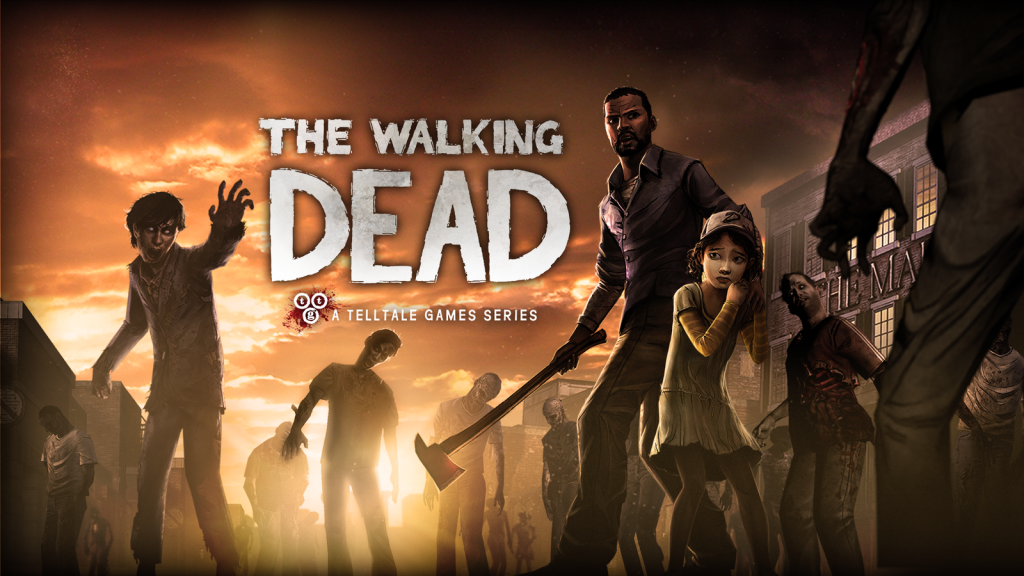
Unlike most of the games on this list, Telltale’s The Walking Dead carries so much more emotional weight because you are the one making decisions, not your character. So, when someone dies in this game you can’t help but feel personally responsible. Sometimes, you even find yourself replaying each episode to see if you could have done anything differently to keep them alive. In some cases, this death is inevitable; in others, it isn’t.
The villains are really a massive part of The Walking Dead and are written extremely well in this game. Even to a point where they get their comeuppance, you feel as gratified as if you’d just eaten the world’s best steak…twice.
I specifically chose the first season because of the initial impact it had. The games hold no significant advancements in the gameplay; instead, they focus on continuing the story of Clementine and her growth as a person in the zombie apocalypse.
Every entry in The Walking Dead holds new and exciting, emotionally charged choices that have kept me drawn in and hooked through all 4 seasons (+ spin-off seasons). It isn’t a game series that looks like all the other games on offer, and it isn’t one of the bog-standard AAA titles that all play the same. Telltale’s The Walking Dead is a narrative-driven, choice-based experience, and it trumps every other zombie game that I have played.
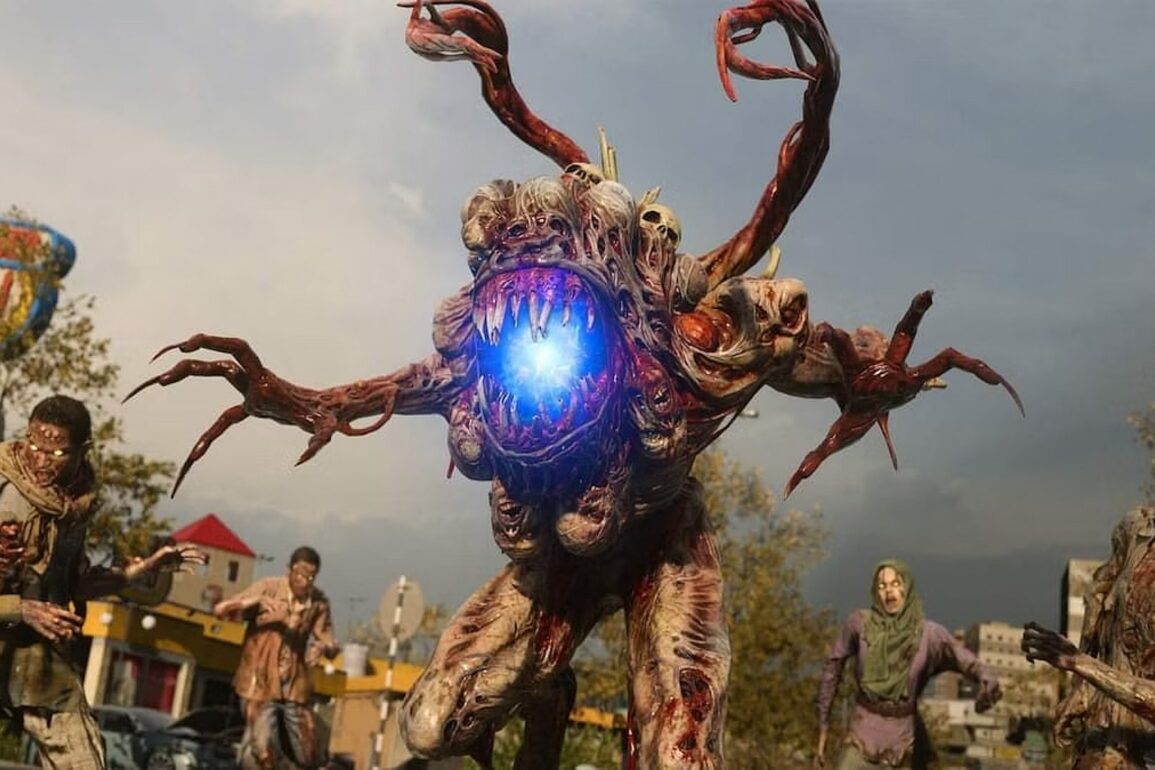
Leave a Reply